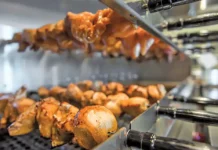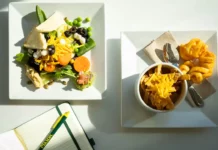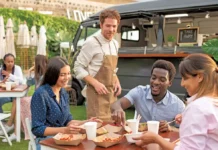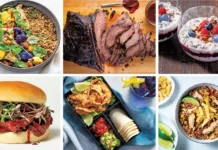
Though it’s become common practice to collect and utilize customer data such as email addresses and birthdays, many restaurants are still missing out on a rich source of information: visit data. Visit data includes the ability to tie individual customers to in-store traffic, dwell time, peak hours, and demographic breakdowns, all of which help restaurants better understand guest behavior.
Before the inception of visit-based marketing software, restaurants had the disadvantage of only seeing online metrics, such as open rates and click-through rates, as an indicator of marketing performance. Now, by connecting their marketing platform with their in-store guest WiFi, restaurants can capture online AND offline information about their customers. This sheds light on the “true consumer identity” and provides more actionable insights.
It’s not surprising that restaurants tracking customer visit data are already one step ahead, but perhaps more important than capturing data is how immediately the data can be used. Here are three practical ways restaurants can dig into visit data to reach new customers, retarget lost customers, and ultimately increase revenue.
1. Focus on Personalization
Consumers these days not only expect companies to deliver personalized interactions, they are frustrated when it doesn’t happen. Tapping into visit data to segment customers is key to developing personalized marketing efforts. Once a restaurant understands the nuances in their customer base, employing specific messaging and campaigns to reach them should result in significantly higher performance.
How exactly does this work? One example is to segment customers based on visit time, allowing restaurants to identify a midweek lunch guest versus a happy hour guest. Chances are, these customers will respond differently to different promotions. A BOGO drink coupon would be appealing to the happy hour guest, whereas a discounted appetizer coupon may be more appealing to the lunch guest. Having the ability to create segments like these and send personalized offers is a gamechanger, increasing the effectiveness of communications.
2. Target Lapsed Guests
Although the impact of the pandemic has increased the number of lapsed customers for many restaurants, this also creates a huge marketing opportunity. A lapsed customer is generally defined as a guest who hasn’t returned to a restaurant for 30 days or more. By tracking the visit behavior of individual customers, restaurants can create campaigns that will help bring these customers back through the doors.
One of the more cost efficient ways for restaurants to target lapsed customers is through email win-back campaigns. An email win-back campaign is an automated series of personalized emails intended to increase brand consideration, re-establish the relationship, and ultimately incentivize purchase. The idea is to gradually increase the incentive for the guest to re-engage with the brand. Not only does this provide insight into what guests are attracted to, but it also helps restaurants save on offer costs since it’s not a straight jump to the richest promotion.
3. Leverage Lookalike Audiences
Creating lookalike audiences helps restaurants reach new customers that digitally behave like their current customers. The first step to building a lookalike audience is to compile a sizeable list (typically a minimum of 1000 based on the platform) of existing customer email addresses. Once that list is uploaded to an advertising platform (like Facebook, for example), the platform will automatically create a lookalike audience by finding other people in their network that “look” like the customers you already have. Because this target audience is built from the same attributes of your pre-existing customers, the messaging and campaign is generally more effective and efficient than general prospecting campaigns that are based on third-party information like geography or interests.
Genuine Concepts, a restaurant company with 12 locations, is a great real-life example of the success restaurants can see by leveraging lookalike audiences. Like many restaurants getting started with advertising, Genuine Concepts launched geofencing campaigns aimed at people in a specified mile radius, but they didn’t see their desired results. There were two root problems: they weren’t reaching the right audience because they didn’t have the data to do so.
Recognizing these problems, Genuine Concepts partnered with visit-based marketing platform Adentro to start collecting guest information via their guest WiFi network. Once they had visit data, they built lookalike audiences based on real customers and launched targeted ads through their advertising partner. Not only did they see over 9,000 Walk-Throughs directly attributed to those ads, but they also ended up having to turn some of the ads off because they ran out of reservations and seating.
These strategies have one main thing in common: success starts with having the right data. Discover how hundreds of restaurants are tracking guest visit behavior and fueling their marketing efforts through Adentro by visiting their website.























